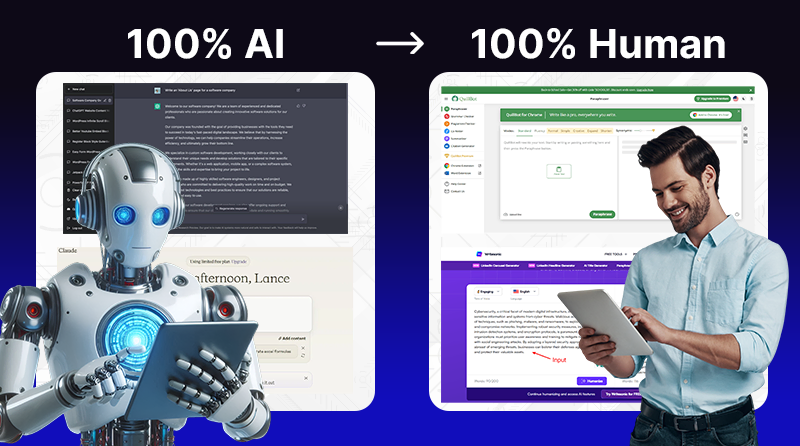The Emergence of AI-Powered Voice Assistants: What’s Next After Siri and Alexa?
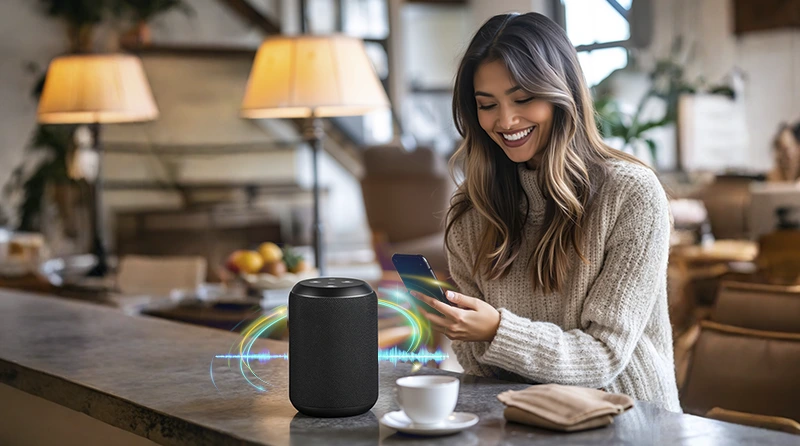
The AI-powered voice assistants have been in the market for a long time, but back then, they were not in much use. When Siri first appeared on the iPhone, everyone was amazed that a phone could actually talk back.
That moment sparked the beginning of AI voice assistants, and over a decade, these AI voice assistants have evolved from a simple voice recognition tool to adaptive AI-powered voice agents, which not only talk back but also understand and simplify human tasks.
For this evolution, we can thank the rapid technological advancement for making AI voice assistants accessible to everyone.
Even big giants are betting on them to be the next frontier. The number of voice assistant users in the U.S. in 2024 was 149.8 million, and this number has increased since then.
These number hints at a bigger transformation in the voice assistant technology. But the real question is, what’s the next big thing after Siri and Alexa?
This is what we are going to uncover in this blog. Along with the latest key trends in the AI voice assistants and how they are transforming consumer interaction and experiences.
So, without any further delay, let’s get going!
The Evolution of Voice Assistants: From Siri and Alexa to the Future

We are gradually becoming closer to voice assistants, whether it’s in smartphones, home appliances, or any other smart devices. They are becoming smarter and customizable to simplify our daily tasks.
But how did they reach a certain level? Let’s understand how voice assistants have evolved throughout the years.
The Rise of Voice Assistants
The first assistant launched by IBM was also a smartphone, Simon, in 1994. In 2008, Google launched its voice search option for mobile apps, which led the way for Google voice assistants.
Since the introduction of Siri in 2011 by Apple, voice assistants have been innovating. At the time, the concept of talking to your phone and having a smart reply was futuristic.
Soon after that, the Google Assistant and the Alexa of Amazon joined the fray, and then voice interaction became a daily tool.
Voice commands soon became integral to the lives of millions of people around the globe. And, now you can command voice assistants to check the weather, manage schedules, or control smart home devices.
Basic Commands to Intelligent Conversations.
These tools did not just remain as mere voice recognition over time.
As AI voice technology, speech recognition, and natural language understanding were combined, assistants started to distinguish the meaning, tone, and context instead of keywords.
This change could enable them to have more natural and intuitive conversations that expand the limits of what digital assistance can be.
Personalization and Intelligent AI.
The current AI-based voice assistants can track user behaviour, recall previous interactions, and tailor responses to provide a more personal experience.
Google Assistant and Alexa are still advancing their AI frameworks, increasing the accuracy, responsiveness, and emotional intelligence with the help of generative AI. Consequently, the interactions become less robotic and more humanlike.
Future of Voice Technology.
In the future, the development of AI voice assistants will transform our relationship with technology.
We are heading to the future where such systems will not only respond to inquiries but also preempt needs, automate complicated actions, and deliver real-time information across devices interacting with each other.
The second step will involve creating the next level of conversational AI that will decrease the distance between machines and people-developing experiences that are indeed seamless, contextual, and natural.
AI Voice Assistants: How They Are Shaping the Next Generation of Tech?
The tech has evolved beyond imagination. The imaginary tech that we have seen in sci-fi movies, like a voice-activated AI assistant that understands complex commands, is becoming a reality.
But how they are evolving from a simple command tool into a proactive, context-aware one is where we are heading in voice assistant technology. Moreover, it has become an essential part of interaction across diverse sectors like healthcare, smart home, and automotive.
When it comes to the next generation of tech, here are the following areas where we are heading:
Natural human-computer interaction
With the help of NLP and Machine learning, voice assistants can make interactions with technology to understand the context, intent, and emotional tone.
Because of this, the need for traditional interfaces like keyboards and screens has reduced in many scenarios.
Ubiquitous integration
Voice assistants are not only being integrated into smartphones and smart speakers, but a variety of Internet of Things (IoT) devices, such as smart home appliances, wearables, and in-car infotainment systems, are being implemented with voice assistance.
This provides a unified, inter-device experience in which the tasks can be transferred to different devices without any loss of context.
Better accessibility
Voice technology is a boon to individuals with disabilities and provides greater independence and inclusivity in both education and employment.
By offering hands-free control over devices, with real-time transcription and navigation help, it made disabled users independent.
Business automation and efficiency
The AI voice assistants are automating manual operations within the enterprise through automation of usual operations, e.g., scheduling meetings, data input, and support to customers.
This liberates human workers to work on more sophisticated, high-value assignments, with major transformations in productivity and cost savings.
Hyper-Personalization and Proactivity
Advanced analytics and past user data will enable voice assistants of the future to act proactively and predictively, and will become digital companions instead of reactive devices.
Industry-Specific Solutions
Custom voice AI systems are being developed in particular industries, like medical note-taking on behalf of healthcare providers or voice-enabled banking transactions, which have a specialized need of the industry and regulatory demands.
Basically, AI voice assistants are changing the nature of human engagement with the digital world, which makes the technology more available, effective, and closer to everyday life and work.
Beyond Siri and Alexa: Upcoming AI Innovations in Voice Technology
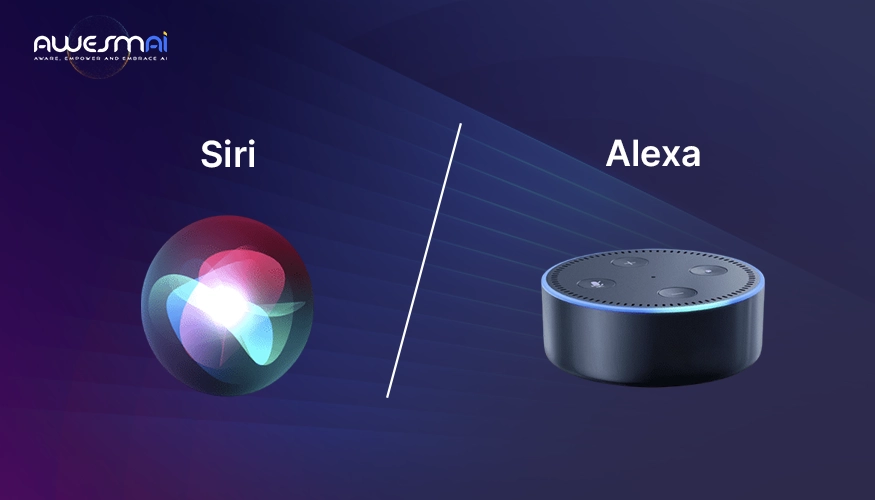
The AI voice assistants are quickly evolving beyond well-known brands, such as Siri and Alexa. The advanced AI technology made human-like interactions possible through integrating more context and real-time responsiveness, and multilingual assistance.
This advancement will improve user experience but also add new features like customization of brand voice, improved data privacy, and close integration with business systems.
Now, we will move on to the most exciting future trends that are influencing the future of voice technology.
Generative AI for improved Conversation
The generative AI helps voice assistants to make answers on the fly and leave presets behind, creating natural, conversational replies.
The given change makes the interactions more human and enables assistants to address complex tasks, such as writing emails or maintaining schedules, in a seamless way.
Improved Natural Language Understanding
As we know that the future voice assistants will be capable of understanding the meaning, intent, and context far more accurately.
The progress in natural language processing will make assistants grasp subtle words and feelings, providing more interactive, timely, and personal responses.
Extended Multi-Language Functionality
Being able to support various languages and dialects in general will become a common practice for voice assistants.
It is especially important to international users and multilingual settings, where voice assistants need to be able to switch languages and be able to be understood similarly in a wide range of linguistic scenarios.
Voice Cloning and Brand Voice Technology.
The use of AI voice cloning will enable the brands to develop distinctive and recognizable voice identities that are both genuine and reliable across every customer interaction point.
This will assist in improving the customer experience through the provision of personalized and emotionally captivating conversations that are brand personality-based.
Privacy-First AI Design
With the consciousness regarding data privacy, a large number of voice assistants will integrate built-in privacy control, allowing users a better understanding and authority over their data.
These kinds of upgrades will ensure that users’ sensitive conversations will stay secure without compromising any functionality or their convenience.
Integration with the business system
The new AI voice assistants will be closely integrated with enterprise applications and daily applications, automating processes, handling meetings, taking payments, and even qualifying leads.
These profound integrations will make them much more than mere assistants to critical business resources.
Key Trends in AI Voice Assistants: Personalization and Integration
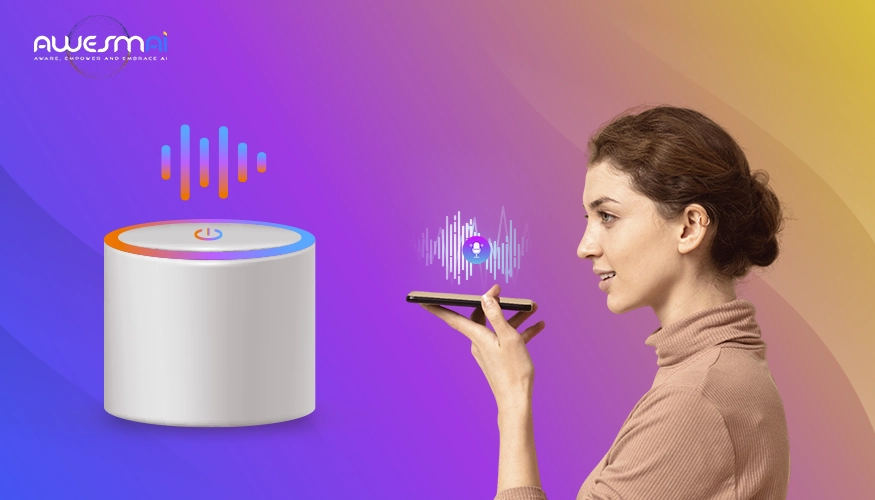
The current state of development of AI voice assistants is fascinating. Technology has now been updated, and we are witnessing smarter, more adaptive systems that understand the users more and can easily integrate into day-to-day life.
The following are some of the most influential trends that influence their development:
Hyper-Personalization
The voice assistants of today are not only able to identify your voice, but you can also identify your tastes, habits, and even your mood, which is all powered by AI. They are training to provide context-sensitive and emotionally sensitive reactions and make each interaction seem more human and more relevant.
On-Device Processing
Newer AI voice platforms process data on-premises, rather than fully relying on cloud systems. The change enhances the responsiveness, secures data, and provides an offline feature to smart speakers and smart home systems.
Proactive Support
New AI assistants are no longer awaiting voice commands. They predict needs, such as proposing a meeting reminder, depending on your calendar or customizing your smart devices, without having to enter any information.
Autonomous Task Execution
Voice AI can now execute full workflows on its own, as the business system has become more closely integrated. They can do everything, end to end, without many people, including sending emails to carrying out transactions.
Emotional Understanding
The voice agents of the next generation are becoming emotionally conscious. They can know how you feel and modify their human-like voice to suit your mood, with a tone and word analysis, to create easier and less artificial conversations.
Voice Experiences AR
The combination of AI conversational and AR is introducing possibilities. Think of giving verbal instructions to the 3D displays or computer overlays; this fusion is already defining how we experience related devices.
Multi-Turn Conversations
Thanks to the development of memory and natural language understanding, AI voice assistants can save the context in a series of queries. This means now they can handle the follow-up questions or requests without losing track of the conversation.
In-depth Enterprise Integration
Companies are integrating AI-based voice agents into CRMs, HR applications, and business systems to automate business operations and workflows, handle data, and enhance customer experience using AI.
These dynamics make it evident that AI voice assistants are not just digital assistants anymore; they are changing into smart AI agents capable of natural interaction, extensive integration, as well as personalized engagement.
How AI Voice Assistants Are Transforming Consumer Interaction and Experience?
AI-powered voice assistants are changing the way users experience technology today, making it faster, more natural, and very personalized.
They are transforming the way we interact with the digital world, beginning with emotional insights and moving through to smooth interaction with intelligent technologies.
Let’s see how this is happening.
Smart and Context-Sensitive Interactions
The voice assistants of modern AI are not reactive anymore, but they can be contextual. They can interpret the tone, behavior, and also user history in order to provide answers that are relevant and human-based.
They are not only able to answer the questions, but they also anticipate them, such as to remind you to order groceries again or to provide the most appropriate route to take before you go out of the house.
Emotional Intelligence in Interactions
Emotional intelligence is the next AI voice technology breakthrough. More sophisticated models can now be used to identify tonal, pitch, or speech rate changes to deduce the emotional mood of a user – frustration, excitement, or stress.
And adjust their tone to suit. This generates relationships that are sympathetic and emotionally in line with those that are robotically oriented.
Hyper-Personalization of All Users
Voice assistants are being taught to learn about individuals. With their mixture of behavioral data, preferences, and previous interactions, they provide more customized recommendations.
Be it by recommending a new playlist, configuring your smart home, or creating a day plan. Such personalization generates closer bonds between brands and users.
Cross-Device and Multilingual Support
Users of the world are now demanding real-time, precise multi-lingual communication. Artificial intelligence, such as Google Assistant and Alexa, can comprehend dozens of languages and dialects in the moment to make it available to all people.
Combined with cross-device integration, you are capable of initiating a command on your phone and carrying it to your car or TV without interruption.
Voice Biometrics Security and Personal Access
One benefit of voice technology is security. The voice assistants of AI can now be employed to recognize users by unique voice patterns.
Not only does this stop any form of unauthorized access, but it also allows secure and frictionless transactions, such as verifying payment or unlocking smart devices with a mere voice command.
Integrating Voice and Visual and AR Experiences
AI voice technology and augmented reality (AR) are community members that are setting up the path to a more immersive experience.
The next generation of voice-activated AR interfaces and features allows you to use voice commands to navigate the AR-based interface.
So, can you ask your assistant to draw attention to virtual objects or show you information in your surroundings? The integration of these two renders the interaction to be intuitive and hands-free.
Smart Ecosystems Integration
Voice assistants that are based on AI have become the foundation of the Internet of Things (IoT). They are fully integrated with smart appliances, wearables, and home systems; in other words, you can control your digital world by simply talking.
Moreover, voice agents have replaced the universal interface, such as controlling the room temperature or making appointments with just voice commands.
Automation of Customer Service
Voice AI is one of the largest beneficiaries of customer service. Intelligent voice bots are being implemented by businesses, which are capable of saving natural speech, addressing problems, and providing personalized support 24/7.
This saves on waiting time, enhances customer satisfaction, and liberates the human agents to attend to more intricate questions.
Life-long Learning and Development
AI voice assistants do not remain in one place as opposed to traditional systems.
Every interaction is a constant learning experience in their lives, as they become more accurate, learn about the accents of the region, and get their responses more focused.
This flexibility means that the more you utilise them, the more they know your tastes and habits.
Note: Ethical Side of AI Voice Assistants
With the increased integration of these technologies in our lives, the ethical aspects such as privacy of data, informed consent, and responsible interpretation of AI are becoming significant.
Now, the most popular AI platforms are concerned with user control and transparency to make sure that technology improves lives without breaking trust.
The Role of AI Voice Assistants in the Smart Home Ecosystem and Beyond

The AI voice assistants have progressed beyond a voice command device and are now the brain of the factory of connected living.
They are now digital centers that bring together smart home products, control habits, and personalize daily experiences all by having a natural conversation.
Smart Homes Made Effortless
Today, the modern house is full of gadgets to use lights, to open and close the doors, to regulate the temperature, to watch videos, and to listen to music, and AI voice assistants unite all of them into a single voice-based ecosystem.
One command, such as Good night, allows the assistant to turn off the lights, close the doors, and even set the thermostat to the desired temperature.
What used to take several apps or remotes happens now through voice interaction and is the easiest way to make a house not only connected but also truly smart.
Sustainability and Energy Efficiency
AI assistants are not only convenient; they are smart resource management. They can therefore learn daily routines to automatically switch on and off lights when a room is not in use, and regulate heating according to presence or absence.
And can schedule on-off appliance use when the peak electricity rates are lower. This will save energy and reduce the carbon footprint of smart homes, making them more sustainable and cost-effective.
Security Awareness and Privacy
With the wide adoption of voice technology by individuals worldwide, the concern related to data security and privacy is being taken seriously.
However, the new AI voice system includes on-device processing, shares information via encryption, so that you can adjust your privacy privileges.
And, it assures that users are in control of their personal data and yet can experience the advantages of automation.
Unified Cross-platform Integration.
The actual strength of the AI assistants is in their interoperability. They can now integrate and synchronize with devices of other brands with common standards such as Matter and Thread.
It can be said that the users are no longer tied to a single ecosystem, be it Google Home, Alexa, or Siri of Apple; they are now able to build a versatile, unified platform that is responsive to their needs.
From Home to the World Beyond
The effect of AI voice assistants is not limited to intelligent homes anymore. They are extending their reach to offices, cars, and shopping locations, and making everything hands-free.
Therefore, voice technology is transforming the way humans relate to machines, whether it be the planning of meetings or the manipulation of in-car infotainment, or the plotting of shopping experiences.
Emotionally Intelligent and Predictive
The new generation or the future of AI-based voice systems is not command-based anymore, but rather conversational.
They will sense emotion by tone, predict needs before the user asks them, and work with the augmented reality (AR) interfaces without causing any disruption. Think of entering your home where your assistant turns on the lights and music depending on how you feel, and not a word is uttered.
Simply. AI-powered voice assistants are the digital glue that is binding the smart ecosystems together, and they include convenience, personalization, as well as sustainability.
Their applications will have far-reaching implications in the future, as these systems keep advancing and define how we will live in a connected way of life in all the various facets of our daily lives.
Conclusion
The voice assistant is not a computer-generated program anymore, but the interface between humans and machines.
These systems are transforming the meaning of convenience and connectivity, as well as managing smart homes and optimizing processes and workflows, to provide personalized experiences and emotional involvement.
With the further development of AI, voice assistants will become more comfortable, safer, and emotionally sensitive.
They will be able to perceive not only what users say but also how they feel. The following wave of interaction will be characterized by situational intelligence, privacy-driven architecture, and cross-machine integration.
The early adopters of this evolution by businesses, developers, and users will be at the forefront in establishing environments that are more interconnected, sustainable, and human-focused. The voice revolution is not in the offing; it is already among us, and it is transforming how we live, work, and communicate.
FAQs
What is an AI voice assistant, and how does it differ as compared to a normal virtual assistant, such as Siri or Alexa?
An AI voice assistant is a device that applies high-tech solutions such as natural language processing (NLP) and machine learning to comprehend the context, continue more human-like dialogue, and accomplish complex tasks. In comparison, most of the typical virtual assistants are more restricted to basic voice recognition and preset answers.
What are the advantages of AI voice assistants?
There are five major advantages of voice assistants:
- Increased productivity and efficiency
- Improved accuracy and reduced human error
- 24/7 availability
- Automate repetitive tasks
- Scalability
Can AI voice assistants handle multiple languages and accents?
Multilingual support and advanced speech recognition, which addresses the problem of various accents and dialects, is built into many modern voice assistants. However, the performance can also change with the regional language model and device capability.
How are businesses getting benefits from integrating AI-powered voice assistants?
Businesses are leveraging AI voice assistants for customer service, scheduling, qualifying leads, or operating smart devices. This has benefited them in reducing the wait time, and their customer representatives can focus on complex queries.






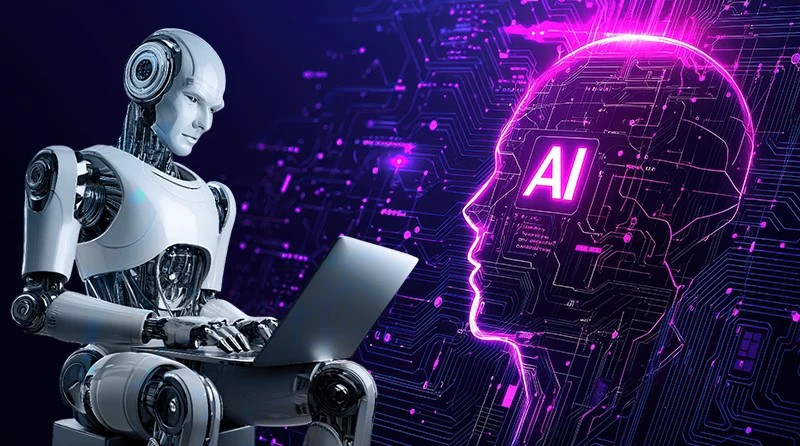




![10 Best AI Presentation Makers [2025 Free + Paid]](https://awesmai.com/wp-content/uploads/2025/08/Best-AI-Presentation-Makers.webp)
